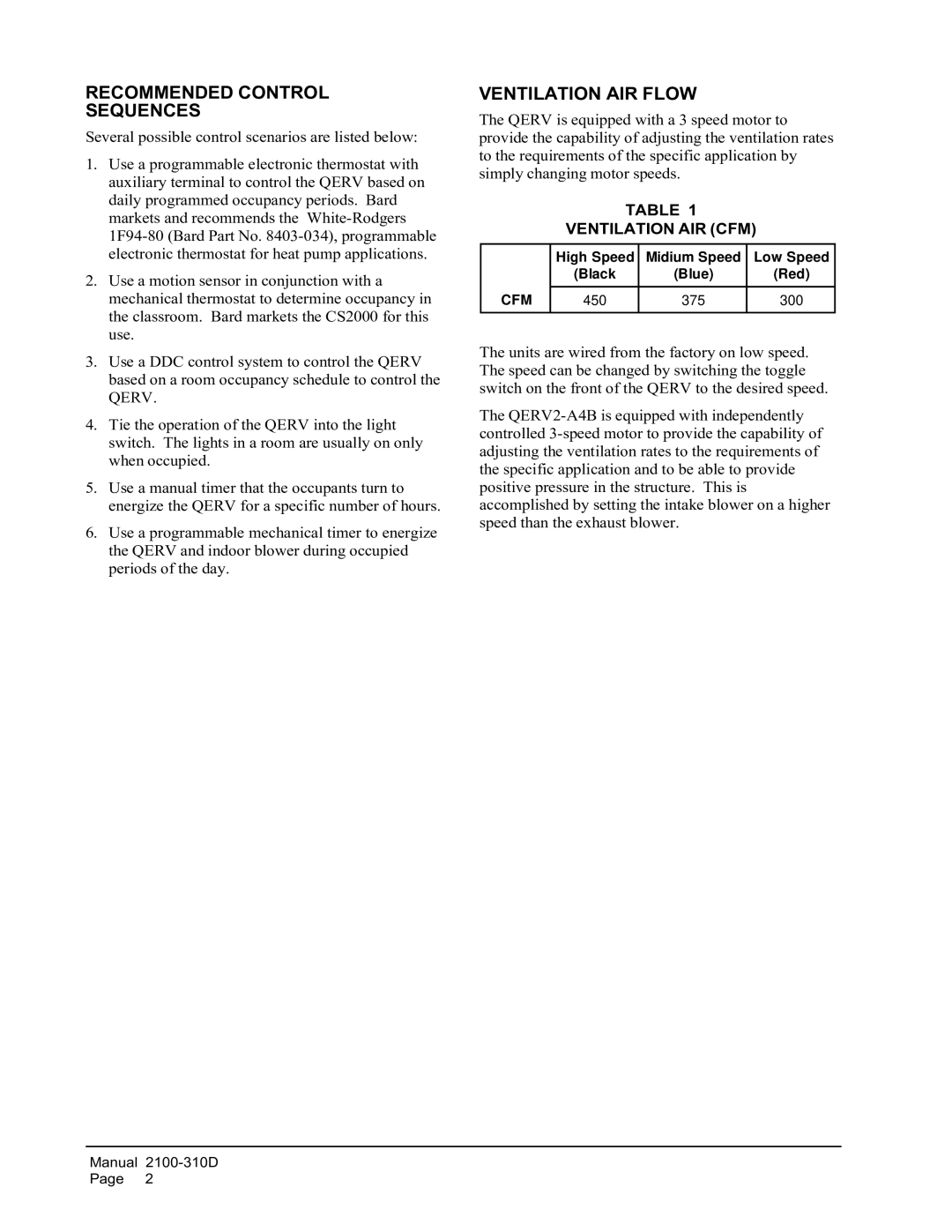RECOMMENDED CONTROL
SEQUENCES
Several possible control scenarios are listed below:
1.Use a programmable electronic thermostat with auxiliary terminal to control the QERV based on daily programmed occupancy periods. Bard markets and recommends the
2.Use a motion sensor in conjunction with a mechanical thermostat to determine occupancy in the classroom. Bard markets the CS2000 for this use.
3.Use a DDC control system to control the QERV based on a room occupancy schedule to control the QERV.
4.Tie the operation of the QERV into the light switch. The lights in a room are usually on only when occupied.
5.Use a manual timer that the occupants turn to energize the QERV for a specific number of hours.
6.Use a programmable mechanical timer to energize the QERV and indoor blower during occupied periods of the day.
VENTILATION AIR FLOW
The QERV is equipped with a 3 speed motor to provide the capability of adjusting the ventilation rates to the requirements of the specific application by simply changing motor speeds.
TABLE 1
VENTILATION AIR (CFM)
| High Speed | Midium Speed | Low Speed |
| (Black | (Blue) | (Red) |
CFM |
|
|
|
450 | 375 | 300 | |
|
|
|
|
The units are wired from the factory on low speed. The speed can be changed by switching the toggle switch on the front of the QERV to the desired speed.
The
Manual
